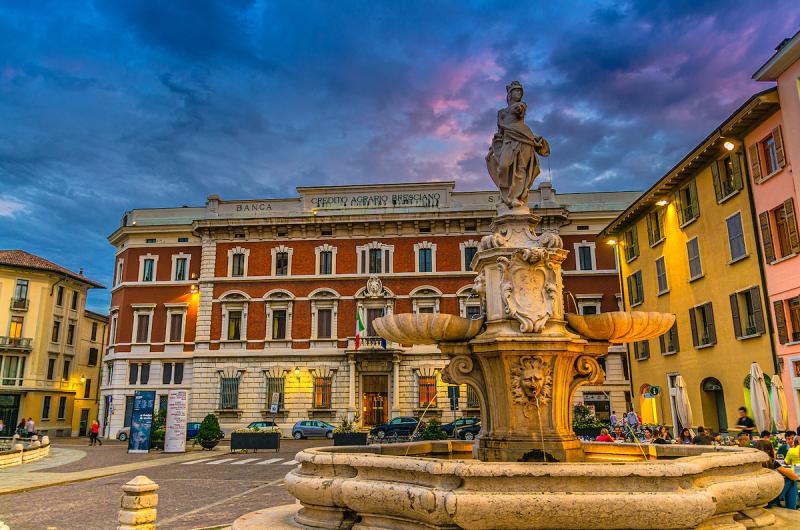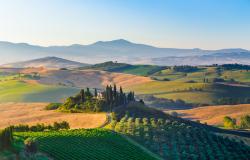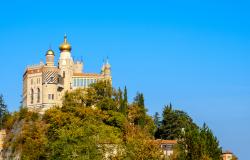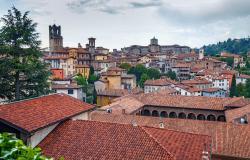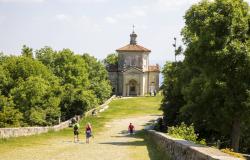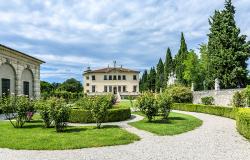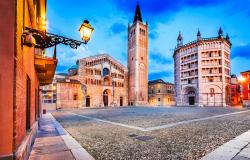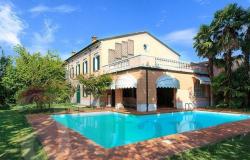At the foot of the Alps, not far from lakes Garda and Iseo, the vibrant city of Brescia is the perfect destination for a city break away from the main tourist routes, offering art, history, and culture, aperitivo under the porticoes and shopping in its elegant boutiques.
Just an hour and a half from Milan, Brescia is the second largest city in the region of Lombardy, with thriving industries, and home to Franciacorta sparkling wine. Together with neighboring Bergamo, Brescia has been nominated the Italian Capital of Culture for 2023.
Founded more than 3,200 years ago, Brescia has been a strategic center since pre-Roman times. Its old town contains some of the best-preserved Roman public buildings in northern Italy and numerous monuments.
Start with the three historic squares that represent the heart and soul of the city: the medieval Piazza Paolo VI, the Renaissance Piazza della Loggia and the rationalist Piazza Vittoria.
Piazza Paolo VI houses the two cathedrals of Brescia: the Duomo Nuovo and the Duomo Vecchio. The Old Cathedral, also known as La Rotonda, is a circular 11th-century Romanesque church. The New Cathedral was initially designed by Palladio, but financial problems caused the work to be assigned to younger local architects. Construction began in 1604 and was completed in 1825. On the piazza is also the Broletto, the medieval town hall which for centuries housed the civic government offices.

Piazza della Loggia was built in 1492 and completed in the 16th century by none other than Palladio and Jacopo Sansovino, the sculptor and architect best known for his crucial works around Piazza San Marco in Venice. The imposing palace of the same name that stands on the piazza is now the Town Hall. Luigi Vanvitelli, the most prominent architect in 18th century Italy, designed the upper room of the palace. On the square is also the Torre dell’Orologio, a mid-16th-century tower with a large astronomical clock.
Piazza della Vittoria is an example of Art Deco architecture, built between 1927 and 1932 after part of the medieval town was demolished. Here also stands Italy’s first skyscraper, the Torrione INA, built to house the National Insurance Institute and inaugurated by Mussolini in 1932. At the time, it was the tallest concrete high-rise in Europe.
For a journey through time and the history of Brescia, take a walk along Via dei Musei. Here you will find monuments from the Roman era, the archeological complex of the Roman forum and the monastic complex of San Salvatore-Santa Giulia, which are part of Unesco’s serial World Heritage site, “Longobards in Italy - Places of the Power.”
The monumental area of the Roman forum includes some of the best-preserved Roman public buildings in northern Italy: the Capitolium of Brixia, the main temple of the Roman city, dedicated to the cult of the Capitoline Triad (Jupiter, Juno and Minerva); the Republican Sanctuary, the oldest structure in the Forum, with remains of the mosaic floors and wall frescoes; the impressive Roman theater, which measures 86 meters in diameter and could hold up to 15,000 spectators.

The monastic complex of San Salvatore-Santa Giulia, which today is the Museo di Santa Giulia, contains about 11,000 works of art and archaeological finds. At the time of the Longobards, it was headed by a woman, princess Anselperga, daughter of King Desiderius. It is one of the best examples of early medieval architecture.
For a different dive into art, head to the Pinacoteca Tosio Martinengo, which houses an extraordinary collection of art, including pieces by Raphael, Hayez, Lotto, Canova, Romanino and Moretto.
For a fine view of Brescia, head to the Castello, also known as Falcone d'Italia (falcon of Italy), located atop a hill on the northeast side of town. Built between the 13th and the 16th century, it is among the largest castles in Italy and is a favorite recreational area with the locals. From the ramparts, you can enjoy a fascinating view of the city and of the urban vineyard of Pusterla which, with its 3.4 hectares, is the largest of its kind in Italy.

Brescia is also the city of the ‘1000 Miglia,’ considered the most beautiful car race in the world. A museum has been dedicated to this competition in the restored rooms of the ancient monastic complex of Sant’Eufemia, so if you are a fan make sure you add it to your Brescia must-see sights.
